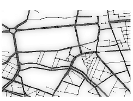|
|||||||||||
Mission Statement
Environmental crises, traffic congestion, financial crises, poverty, social conflicts and wars - social systems typically feature crises characterized by abrupt, rapid and large-scale changes. Such disruptions are barely predictable andhard to control. Despite the very real risks posed by the aforementioned crises, the conventional social sciences usually steer clear of studying "extreme events" by assumption. When postulating the existence of an equilibrium, the main effort concerns characterizing stable states and studying moderate deviations from them. However, most crises represent dynamics far away from equilibrium. Inspired by non-equilibrium physics and interdisciplinary research on complex systems, we have begun to focus directly on critical phenomena and extreme events in social systems. These phenomena are often characterized by power laws and other skewed distributions that differ dramatically from the Gaussian curve. Under such circumstances, extreme outcomes are much more frequent than is usually assumed, based on the normal distribution. In view of these challenges, the ETH Competence Center "Coping with Crises in Complex Socio-Economic Systems (CCSS) aims at coordinating collaborative research on non-equilibrium processes. The CCSS will contribute to a better understanding of the causes and cures of crises in large socio-economic systems.
In the following we higlighted three examples of crises in complex socio-economic systems:
 |
Why do markets crash? Can we design markets such that bubbles and crashes do not occur? Under which conditions does the global network of firms and either stabilize markets, and when does it increase the risk that local crises globally spread? In the presence of increasing globalization, innovation in financial engineering, are financial and credit markets becoming more stable or unstable? We look at market crises as an emergent phenomenon resulting from the presence of mechanisms that lead to positive feedbacks. These mechanisms include herding and over-reactions to information. |
Financial Crisis |
 |
What does congestion spreading have in common with cascading disaster spreading? How can one characterize the breakdown dynamics of traffic flows in urban networks? Why does the traffic situation vary largely from one day to another? How vulnerable is the critical infrastructure "transportation network"? What is the interplay between topology and dynamics when disruption happens? We are planning to respond to these challenges with models that capture grid lock events, integrate self-organized signal control, cascading congestion events, and generate human activity patterns using mental maps. |
Crises in Societal Infrastructures |
 |
Why do wars occur? How can they be ended, or even better, entirely prevented? What are the social consequences of such disruptions? Although the risk and intensity of political violence has been declining since the mid1990s, civil wars, terrorism, and other types of conflict still represent a considerable risk in many parts of the world. We propose a new approach to conflict research that is based on the principles of non-equilibrium theory. Our goal is to achieve a conceptual breakthrough by viewing conflict as a dynamical process rather than as an isolated event caused by static conditions. |
Conflict-Generated Crisis |
Wichtiger Hinweis:
Diese Website wird in älteren Versionen von Netscape ohne
graphische Elemente dargestellt. Die Funktionalität der
Website ist aber trotzdem gewährleistet. Wenn Sie diese
Website regelmässig benutzen, empfehlen wir Ihnen, auf
Ihrem Computer einen aktuellen Browser zu installieren. Weitere
Informationen finden Sie auf
folgender
Seite.
Important Note:
The content in this site is accessible to any browser or
Internet device, however, some graphics will display correctly
only in the newer versions of Netscape. To get the most out of
our site we suggest you upgrade to a newer browser.
More
information

